Tour this beautiful English country garden, rich in roses and cottage garden planting
This quintessential English country garden brimming with roses and cottage garden flowers is a fragrant delight in summer

Rachel Crow
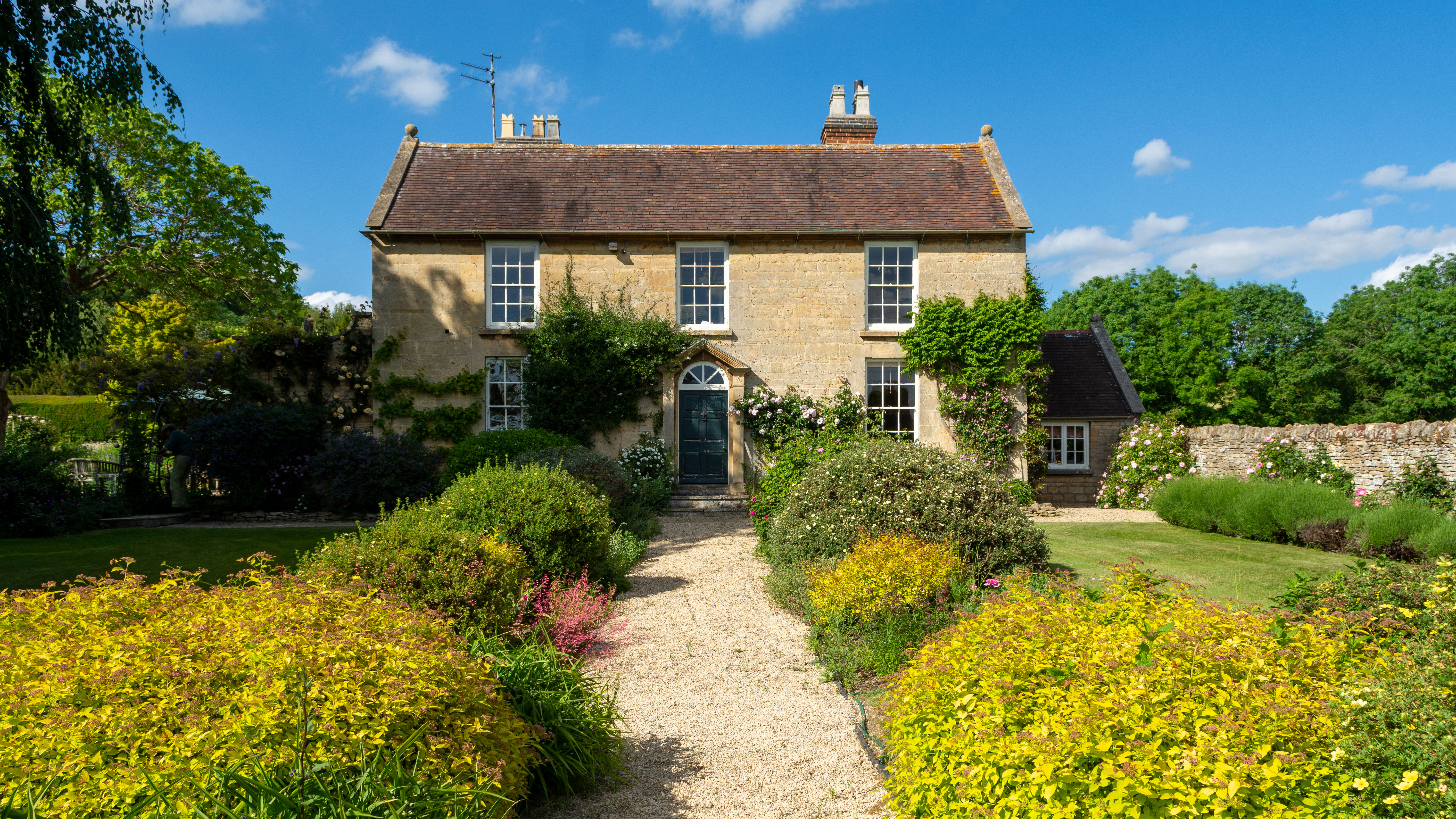
The garden surrounding this Georgian country home creates the perfect setting for the property's elegant architecture, exquisite symmetry and classic features.
For the last quarter of a century the garden has been under the care of its owners, Faith and Anthony Hallett, who have sensitively made their mark on this peaceful setting.
Boasting many traditional English garden ideas, the acre-sized plot is full of delights, from the babbling stream that runs across its length, the shade cast by the majestic weeping beech tree, the sunshine soaked stone terrace, or long borders and island beds brimming with blooms.

While much is in place to provide this lovely garden with a strong structure, it is the use of plants that really draws the eye in early summer, particularly the large collection of roses in the many rose garden ideas
Always colorful and more often than not fragrant roses reign supreme, filling borders and scrambling over arches and arbours.
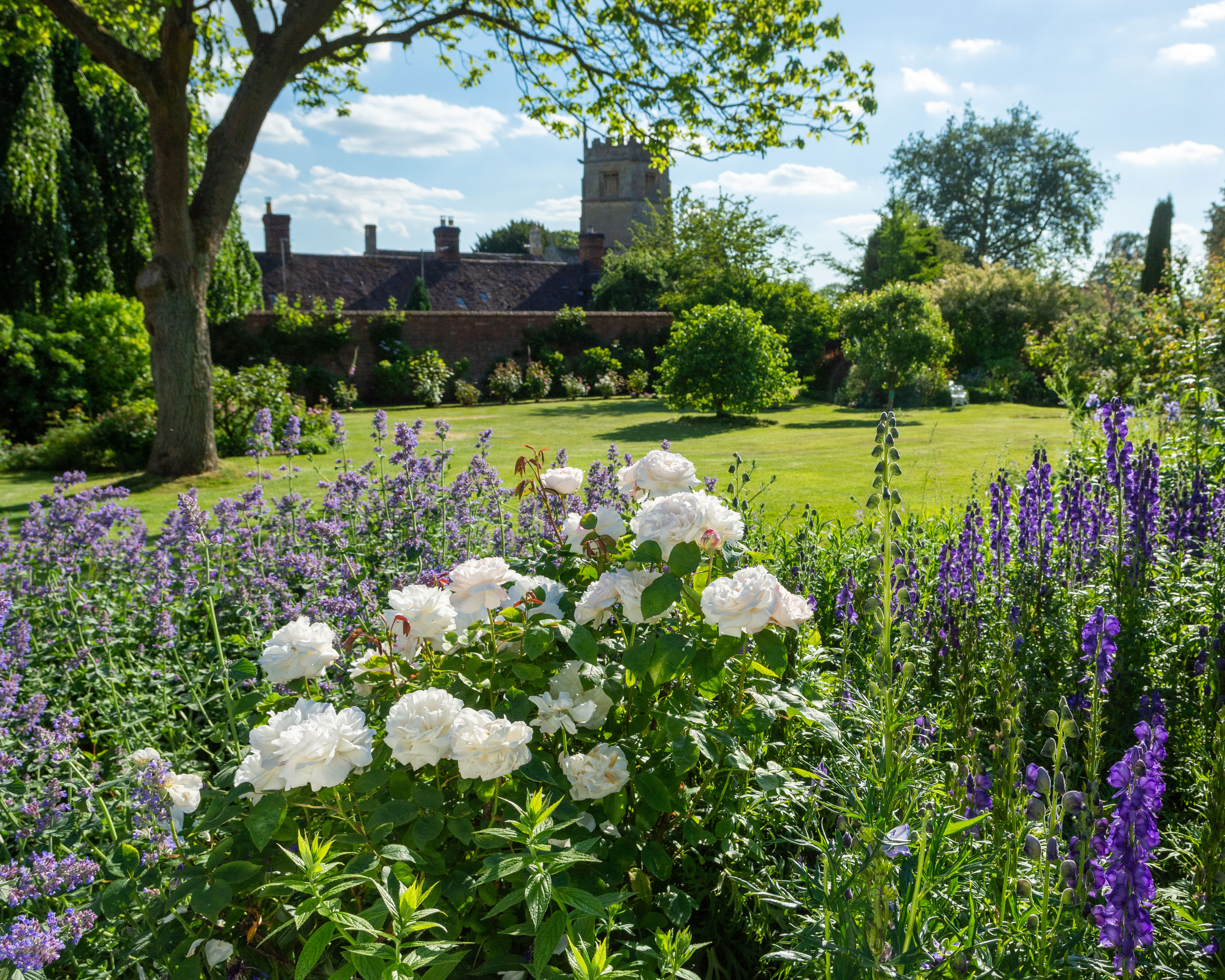
Anthony has selected several of the modern, more disease-resistant rose cultivars over the years, including Charlotte, Graham Thomas, Buff Beauty, The Pilgrim and Molineaux.
‘We have masses of roses; I have got a bit of a fetish for them,’ he jokes. ‘It’s wonderful to be among them in summer, when the air is filled with their perfume.’
Design expertise in your inbox – from inspiring decorating ideas and beautiful celebrity homes to practical gardening advice and shopping round-ups.

There is a degree of formality to the garden, as befitting the character of the house it surrounds, albeit applied with a light, almost laid-back touch.
This is particularly noticeable in the planting and flower bed ideas either side of the long, straight gravel garden path that leads to what was once the main entrance. Pairs of acers and clipped yews flanking an ornate metal gate provide a strong anchor to parallel beds filled with shrubs, roses and perennials that spill into the walkway.
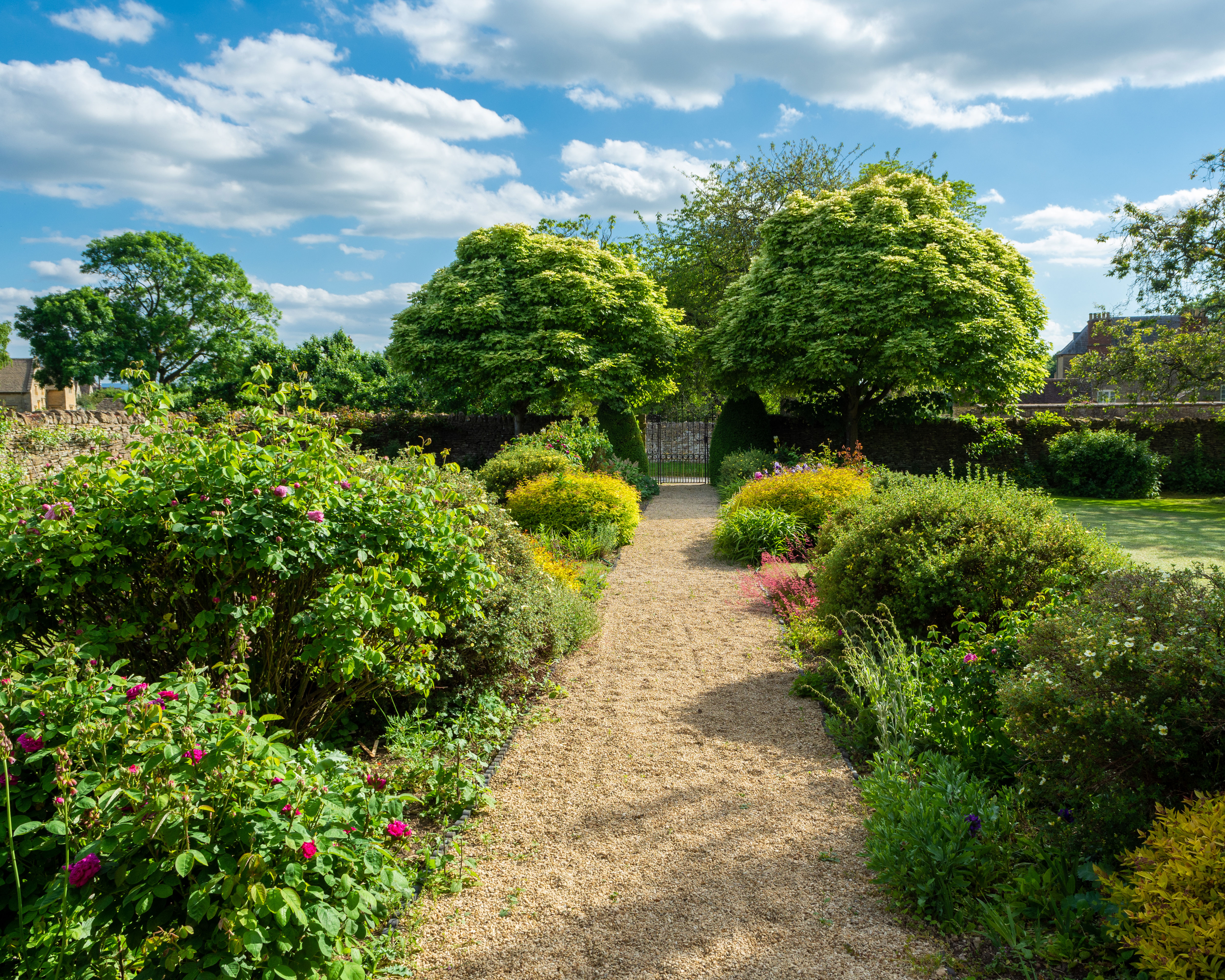
The strong lines of the house itself are somewhat softened by several flowering climbers, among them wisteria and more roses, including the pink-bloomed ‘Penny Lane’ by the front door. The white lacy flowers of Hydrangea anomala subsp. petiolaris caress a north-facing wall.

Many of the borders have relaxed, cottage garden planting, with perennials such as nepeta and monkshood underpinning roses.
A lot of the flowers are planted to ensure there’s plenty to look forward to throughout the seasons, such as the flame-coloured Crocosmia ‘Lucifer’ that joins the red leaves of heucheras in creating a hot border later in the summer.

Looking after the garden is a year-round task, particularly when it comes to early summer when they have to deadhead roses to ensure a long flowering season.
The Halletts are also mindful of the need to keep on top of prolific self-seeders, such as the giant cowslip, which is capable of coloniszing large areas if left to its own devices.
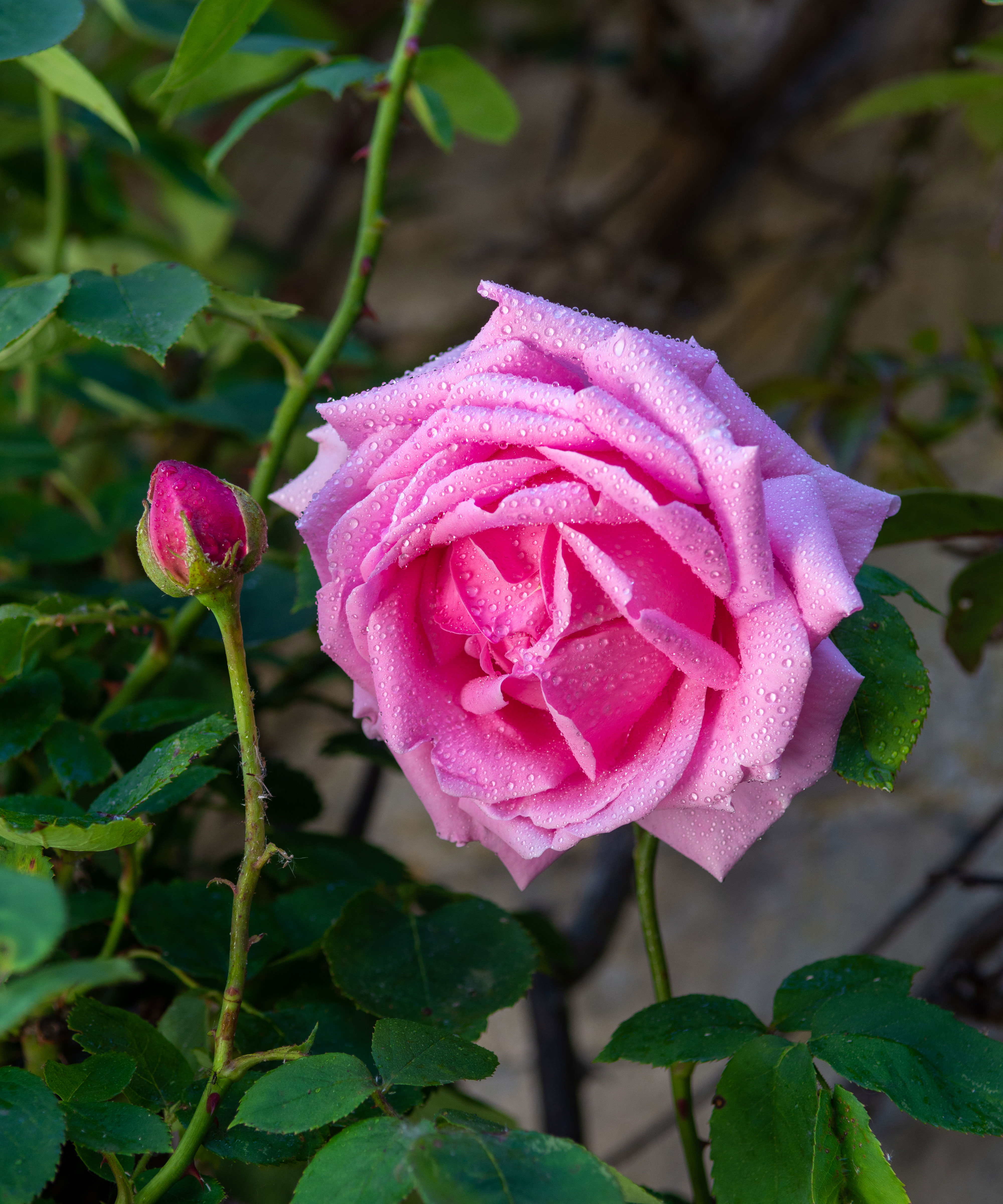
The 30 metre-long stream, which once powered flour, paper and silk mills, is now softened with plants that enjoy damp conditions. These include hosta, giant cowslip Primula florindae, umbrella plant Darmera peltata, and Arum lily Zantedeschia aethiopica, which work well as marginal plants around many water features.
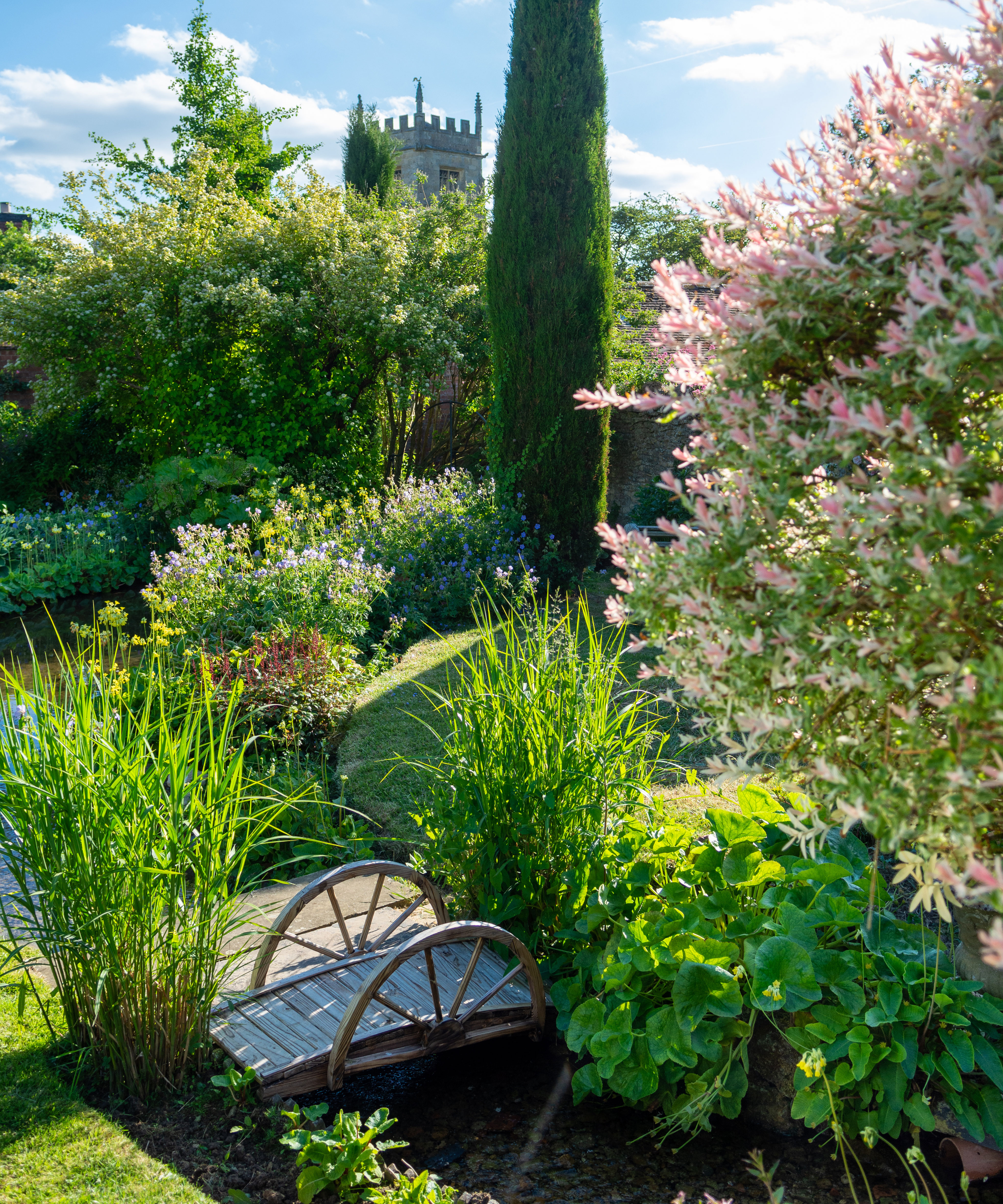
Water features were an important element of Georgian garden design, so this is befitting the heritage of the house.
‘The stream is absolutely magic,’ says Faith. ‘It runs along the whole length of the garden and the marginal plants by the water come up every year and give us a wonderful display during the summer.’
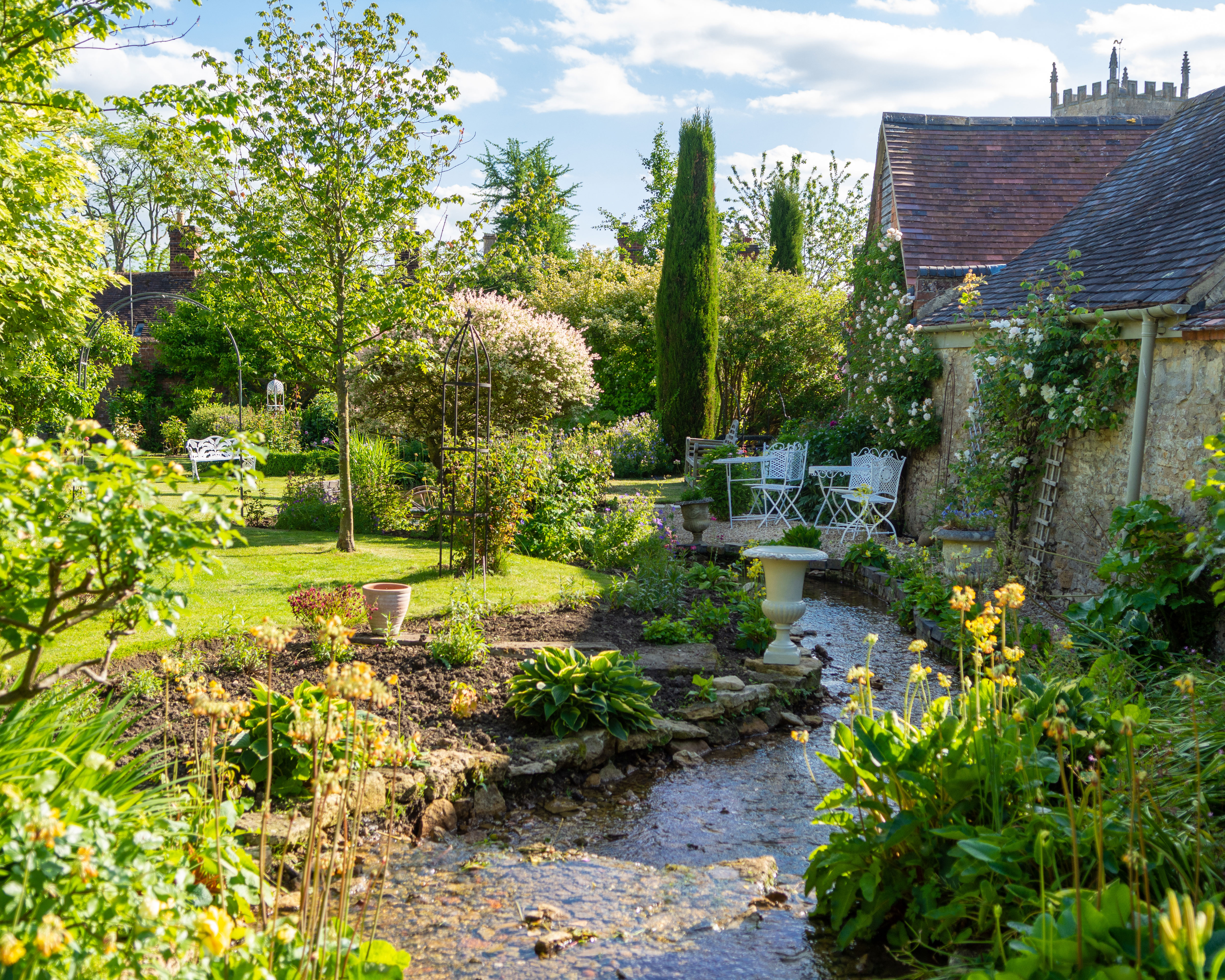
More recent additions to the garden have been chosen with a nod to quality and longevity. These include the box-edged rectangular vegetable beds lying behind the house – a vegetable garden idea that combines practicality with good looks.
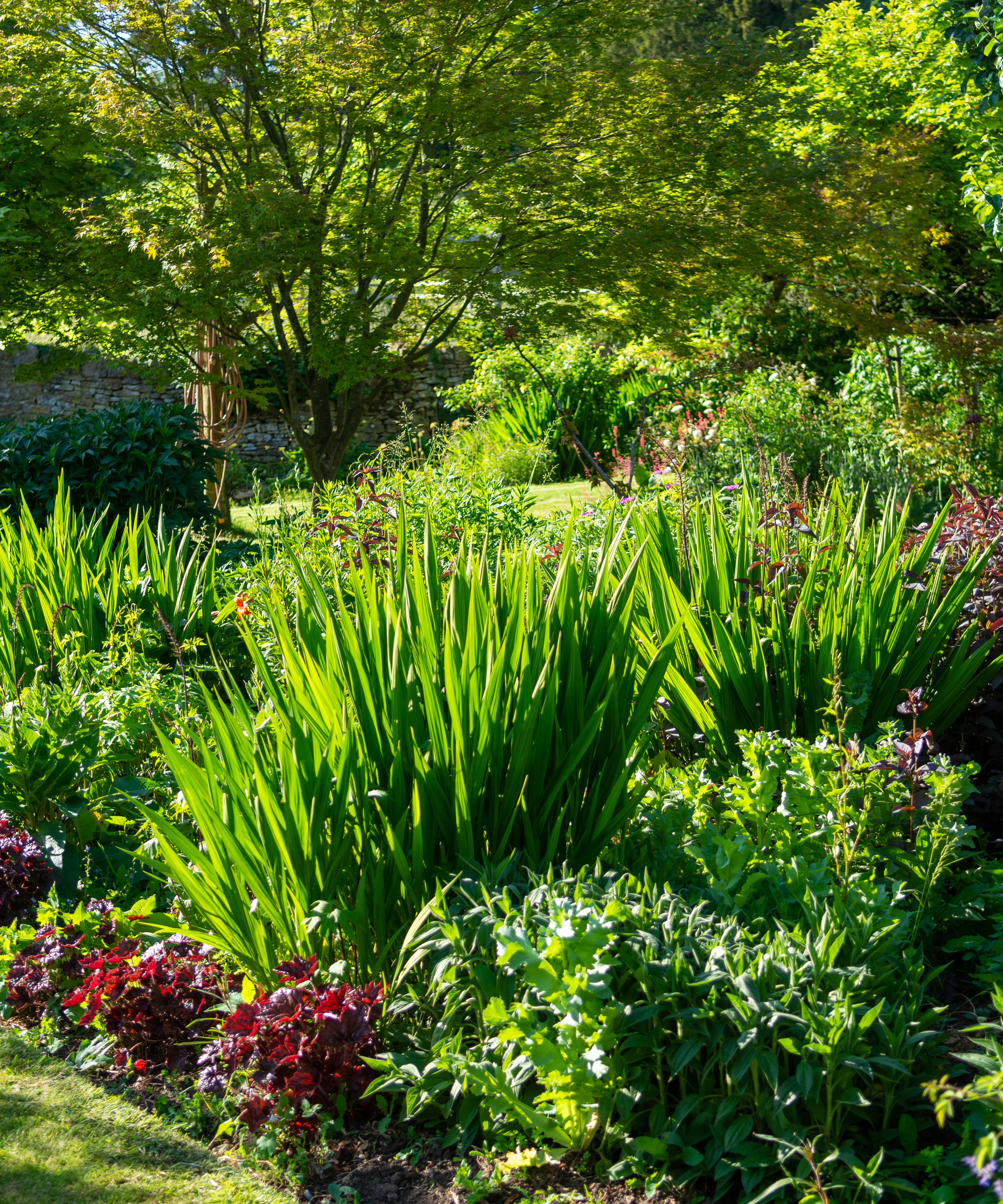
‘We’ve planted a lot of trees over the years, including several Italian cypress and acers to join the ones that were already here. This year we’ve added nine more fruit trees and two Siberian prunus with flaking bark. They say gardens constantly evolve and this is certainly the case here,’ says Anthony
The Italian cypress trees, Cupressus sempervirens, were grown from cuttings by Anthony 20 years ago, and they also added a sparkling flamingo willow, Salix integra ‘Hakuro-nishiki’, with its pretty pink, creamy white and cream leaves.

Faith and Anthony enjoy looking after the garden, and are careful to ensure it stays in good shape.
‘It’s almost like we have it in trust for the next people,’ explains Faith. ‘We are nurturing it and developing what’s there so that we can one day pass it on.’

Sue Bradley writes about gardening, food and wildlife, and the fascinating people who are passionate about these subjects, for a variety of magazines. She served a newspaper apprenticeship and worked on local and regional titles in the West Country before becoming a freelance features writer. She’s a member of the Garden Media Guild and the Guild of Food Writers.